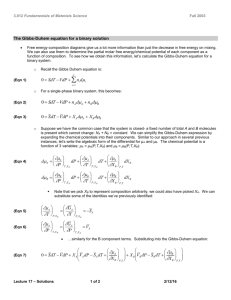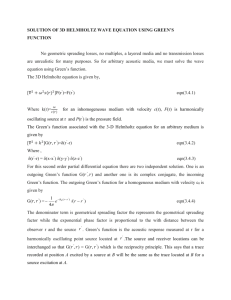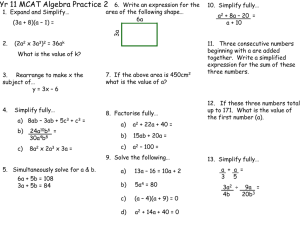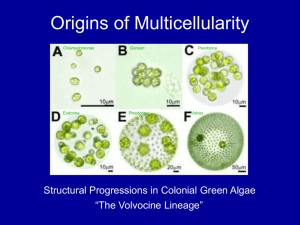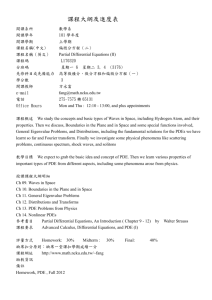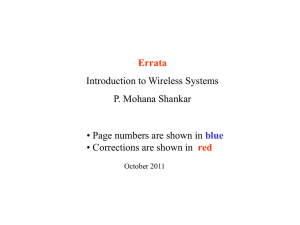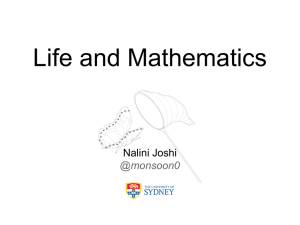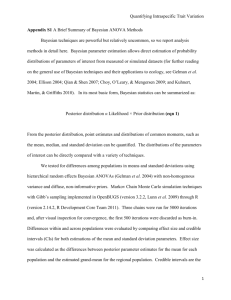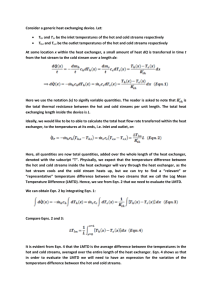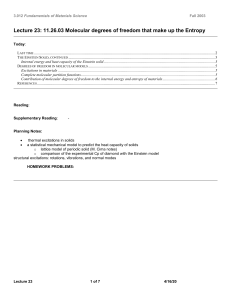PCE_2081_sm_SuppInfo
advertisement
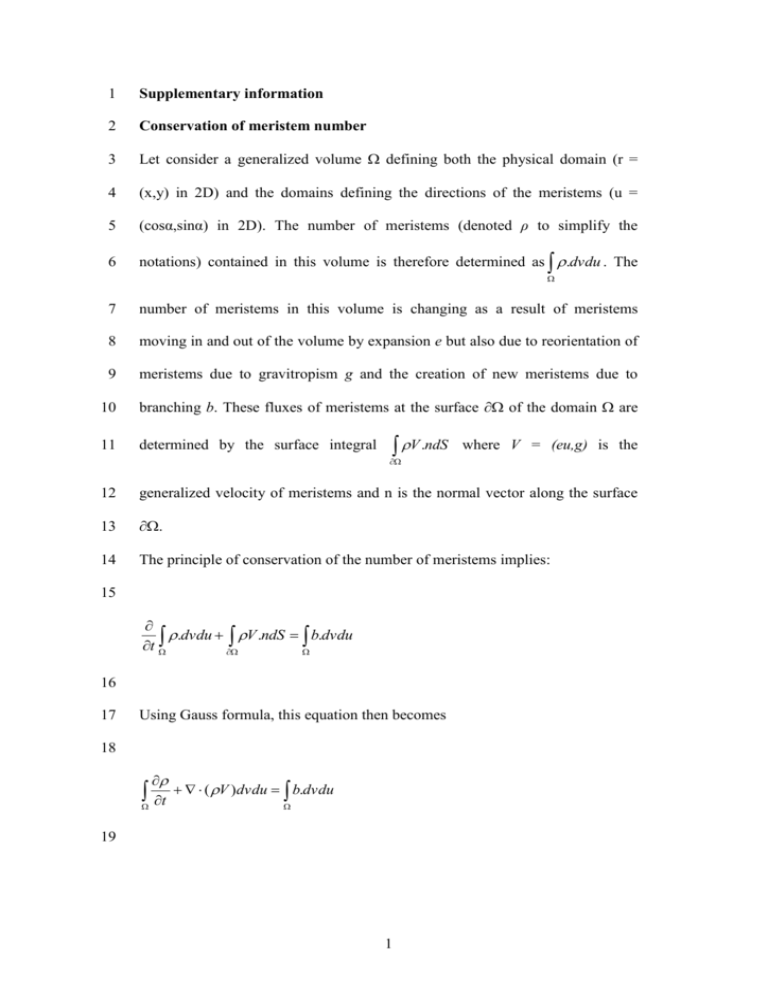
1 Supplementary information 2 Conservation of meristem number 3 Let consider a generalized volume defining both the physical domain (r = 4 (x,y) in 2D) and the domains defining the directions of the meristems (u = 5 (cosα,sinα) in 2D). The number of meristems (denoted ρ to simplify the 6 notations) contained in this volume is therefore determined as .dvdu . The 7 number of meristems in this volume is changing as a result of meristems 8 moving in and out of the volume by expansion e but also due to reorientation of 9 meristems due to gravitropism g and the creation of new meristems due to 10 branching b. These fluxes of meristems at the surface of the domain are 11 determined by the surface integral V .ndS where V = (eu,g) is the 12 generalized velocity of meristems and n is the normal vector along the surface 13 . 14 The principle of conservation of the number of meristems implies: 15 .dvdu V .ndS b.dvdu t 16 17 Using Gauss formula, this equation then becomes 18 t ( V )dvdu b.dvdu 19 1 1 This equation is valid for every volume , and this imply that the differential 2 form of the balance law can be written as: * ( g ) ( eu ) b t 3 4 Where * denote operators to coordinates related to direction of growth u, and b 5 denotes the increase of meristem density due to branching. 6 7 Analytical solution of 1D meristem dynamics using the method of 8 characteristics 9 The system in equation 4 can be solved by finding the solution for the dynamics 10 of the roots of the first order. For the sake of simplicity, we will assume that 11 root angle is defined from the vertical direction. In one spatial dimension, the 12 problem is therefore defined as: 13 t (g ) e cos z 0 Eqn 9 14 15 We denote X(t) a trajectory of a root in the z,α space: 16 17 z (t ) ~ X (t ) ~ (t ) 18 19 The characteristics of the equation is defined by: 20 2 e cos ~ X ' (t ) ~ g Eqn 10 1 2 This equation can be solved by finding the solution ~ (t ) using a 2nd order taylor 3 polynomial approximation for the cosine in equation 10: 4 5 2 ~ e~ z 0 et 0 (e 2 gt 1) X (t ) 4g ~ e gt 0 6 7 Along this characteristic curve, Eqn 9 simplify to a second ordinary differential 8 equation (Eqn 11): 9 10 d ( X (t ), t ) g ( X (t ), t ) dt Eqn 11 11 12 Solution of Eqn 11 using solution of Eqn 10 gives: 13 14 ( X (t ), t ) ( X 0 ,0) exp gt 15 16 In order to obtain the solution of Eqn 9 the following change of variable is 17 made: 18 2 e~ z~ z 0 et 0 (e 2 gt 1) 4g gt ~ e 0 19 3 1 Replacing the expression of z0 and α0 in the solution of Eqn 11 gives the 2 solution for Eqn 9: 3 e 2 ( z, , t ) z et (1 e 2 gt ), e gt exp gt 4g 0 Eqn 12 4 5 It is convenient also to obtain the evolution of the profile of the total root 6 meristem density. This is determined as the integral of ρ with regards to the 7 angle α: 8 ( z,, t ) /2 Eqn 13 ( z, , t )d / 2 9 10 11 12 We use the following change of variable α’ = αegt to simplify this integral: ( z,, t ) exp( gt ) / 2 z et e 0 2 / 4 g (e 2 gt 1), d exp( gt ) / 2 13 We can further simplify this integral by assuming the angle and depth of initial 14 root distribution is not correlated. Therefore, the initial root meristem 15 distribution is the product of two functions such that: 16 17 0 ( z, ) 10 ( z )( ) 18 19 Where П is the rectangle function such that it value is 1 between 0 and π. 20 Therefore, the dynamics of first order root meristem density is found to be: 4 1 1 ( z,, t ) exp( gt ) / 2 z et e 0 2 / 4 g (e 2 gt 1), d exp( gt ) / 2 2 The dynamics of second order lateral roots differs from the first order only by 3 the source term and initial conditions. If we assume for simplification that 4 branching is proportional to ρ1 and that both type of roots have the same 5 behaviour, the total root meristem density will then be written as: ( z,, t ) (1 bt ) exp( gt ) / 2 0 2 2 gt z et e / 4 g (e 1), d exp( gt ) / 2 6 7 8 9 5 Eqn 14
